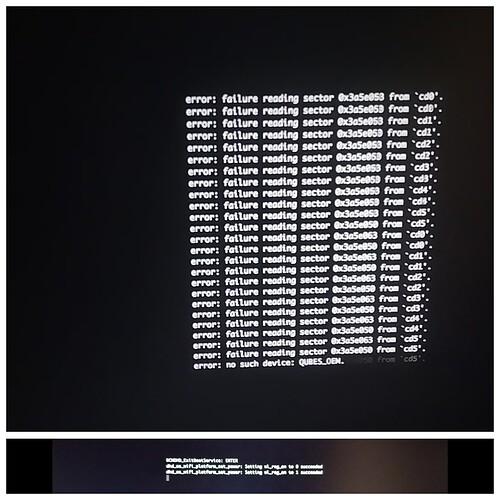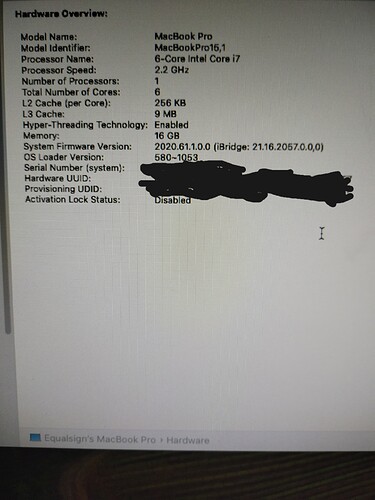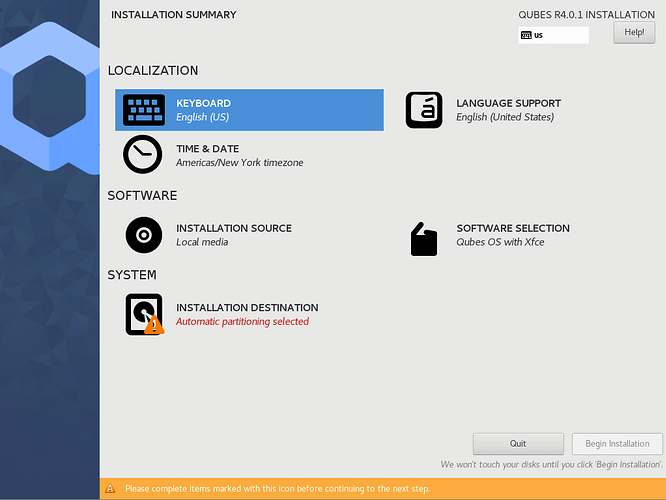I have seen installs where, when a particular point is reached, it goes a long time with only a single blinking short horizontal line. After awhile, it picks up and goes along.
However, I am not using an Apple anymore. It sounds like, when you divide partition, you are trying to accomplish a dual boot. Qubes OS with something else? When I had a 2009 MBP, Used to be Apple used to provide a means to do that besides just creating another partition.
Besides the fact I do not have the money to buy Apple products, one of the reasons I was not interested in having another MBP (of course a newer one) was because Apple Corporate, had become a bunch of control freaks. As the guy in the local computer store said, the reason Apple always works (well nearly always if you do things their way, not experimenting with Linux) is that they do not allow – this that or the other.
Which does not mean you can’t get Qubes working.
One of the things to consider, Qubes really thinks it should be the only OS on the computer. Apple does its own things to choose where it boots from when, that might be effecting what is happening. Notice Apple could not be effected by the malware related to “logo-xxx” because they had already encrypted their logo into their firmware.
Might be you can get some advice from Apple forums, but you sound knowledgeable enough that you probably are trying that. At least they might recognize the error message you are looking at. I don’t recall seeing it.
Creating the install USB, for some of us, has been strangely difficult. At least me. I am guessing you are using Qubes 4.1xxx. Which always seemed to me, got onto the install medium and pretty much just carried on. Well, except for the hang I mentioned, which I have seen go on for several minutes. I think it has something to do with the install deciding whether the graphics card can work, and then choosing some kind of alternate. That does not sound like the problem you have.
With Qubes 4.2 since the weeklies, and Release Candidates after RC2, I had more difficulties. All the time I spent trying to create a Qubes 4.2, was useless, I tried Rufus with Windows 10, different options. Etcher. My used to be-- my way to install Linux was to use Mint Linux, and use the Mint Linux USB tools. These appear to be the same USB tools used by Ubuntu. I said all that not because it has knowledge, just I understand your frustration.
I have a Librem 13, which in one way like Apple, it has its own proprietary BIOS/EFI. Which had been refusing the later versions of installing Qubes 4.2 (well since September 2023) I had gotten it to take Qubes 4.1 again.
I have no idea which thing I was doing which got it to work. But;
I suspected that one of the issues with the boot had to do with the fact the Librem 13 had, when I first gotten it, had refused to work when I tried to install Qubes again to the second drive. I should say, I got the Librem 13 used, and the slower drive was blank. That is, one of the boot issues had to do with the Librem 13 had two drives in it. I actually considered taking the drive physically out, or at least unplugging it.
What I actually did. I created a USB with Ubuntu. I booted the live version of Ubuntu on the Librem 13, and used it’s gparted to blank both drives. I first told it to format them to NTFS. then
formatted again to ext3. Leaving both the drives with nothing on them.
I took one of my later purchases, a USB drive that was USB 3 with the later protocol on it. Put it in a Windows 10 computer, and did a long format, not the quick format. I suspect a quick format only builds the partition table and then later it builds links through the drive. Unfortunately it was an unnecessarily long 128 GB drive. Formatted it to FAT32. I watched a movie and a half while it went on. I wanted to make sure no hiccups came from computer going into rest mode. I used the Mint Linux (latest) USB tool to install Qubes 4.2RC5. Librem 13 booted into it. Installed correctly. Appears to work fine.
Sorry to be so long winded. I don’t know the one critical thing that allowed the install to proceed. Maybe the Qubes folks did something to Qubes4.2RC5 that helped.
Cheers.
Edit: after using Gparted on Librem 13 SSD, I set the flag to make partition a boot.
I tried to create another USB, a much older USB, with Qubes 4.2RC5 with the same techniques. And the install will not proceed with the slower USB, I might guess, there is something to this about this timing during boot process. I have used the USB I installed correctly on the Librem 13 on several other computers, and installs of Qubes4.2RC5 worked just fine.


